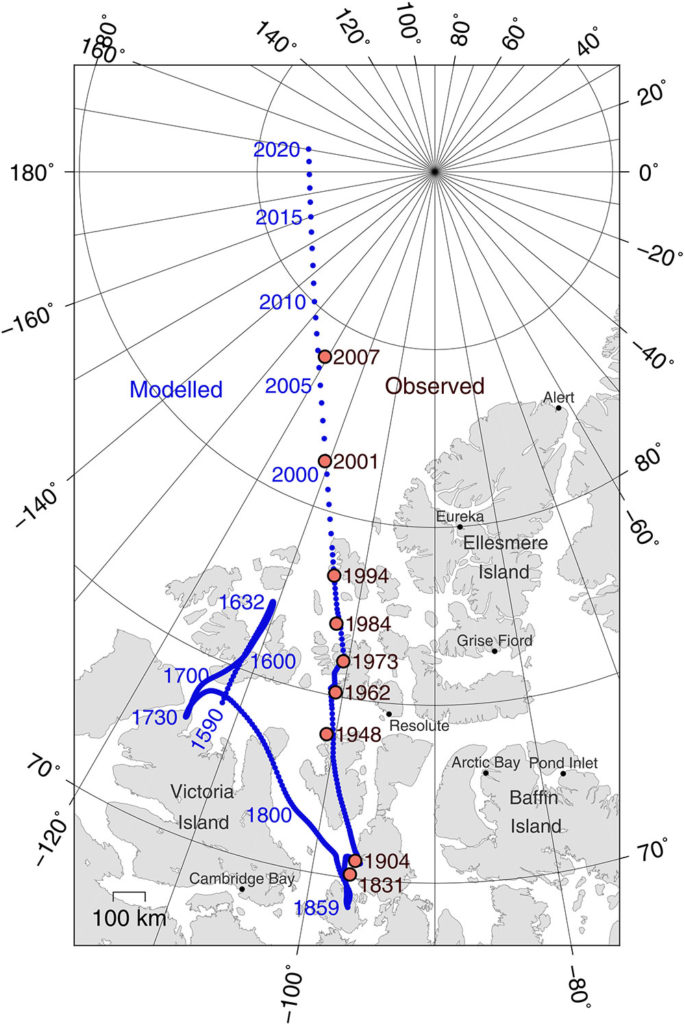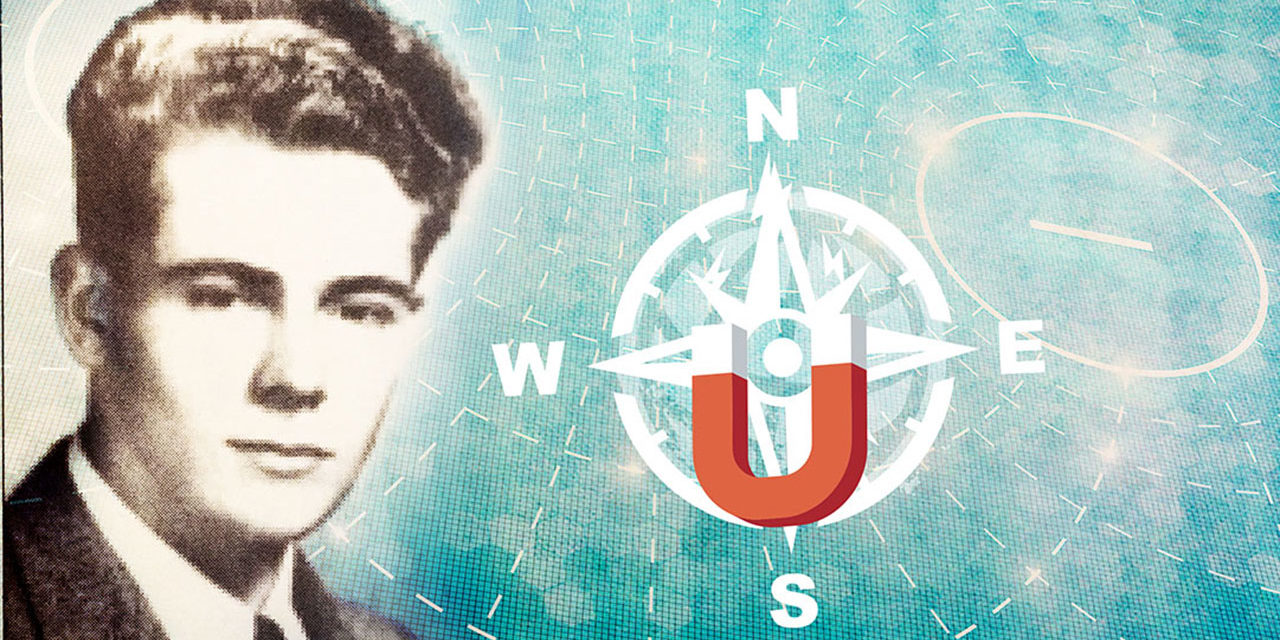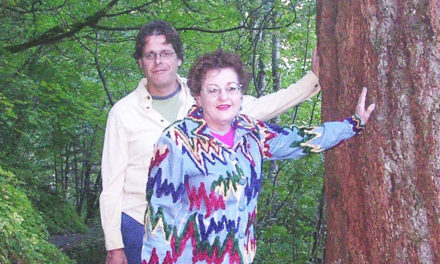Wauwatosa Native Rediscovers “True” North Pole
By Chris Haise
In previous issues, we have explored not only Wauwatosa’s place in history, but the historical significance of the people who have called Wauwatosa home.
In this issue we examine the life of Wauwatosa native Frank Otto Klein, who holds a unique place in history; he is credited with the rediscovery of the true magnetic north pole.
Otto Klein, as he was known, was born to Austrian-Hungarian parents in 1921. His parents had only been in the United States for a few weeks and could not speak English.
The Klein’s lived in the village, north of State Street on the steep 68th street hill. The small home was close to the quarry that contains Schoonmaker Reef, as seen in our Summer Preview Issue.
Klein’s father was a well-known barber in the Tosa area. His shop had three different locations around the Village central. For more than forty years, Klein’s father worked six days a week as a respected businessman, and Klein’s peers and teachers would frequent the family business.
Klein attended what would become Jefferson Elementary. Despite telling people he flunked kindergarten, Klein’s schooling in Wauwatosa would include scholastic honors and awards.
Klein and his brother spent more than a year in Austria at a boarding school because their parents wished for them to continue to speak German.
Returning to the United States in the heart of the Great Depression, Klein attended Longfellow and Wauwatosa High School. Klein was awarded a prize given to the most popular of the teacher-nominated outstanding students.
Along with academic success, Klein won a state championship in “Serious Declamation” with the Speech and Debate team, and he served as Vice President of his senior class before graduating in
1940.
Klein’s success in high school oration led him to pursue a career in acting. After graduation,  Klein moved to New York City to pursue his dream. He found some success, landing a role with a CBS weekly program. During his time in New York, Klein rubbed shoulders with some truly legendary acting figures, including Burgess Meredith, best known for his performances as Mickey in the
Klein moved to New York City to pursue his dream. He found some success, landing a role with a CBS weekly program. During his time in New York, Klein rubbed shoulders with some truly legendary acting figures, including Burgess Meredith, best known for his performances as Mickey in the
Rocky series.
Like so many from the “Greatest Generation”, World War II interrupted Klein’s theatrical career. After Pearl Harbor, Klein enlisted in the Army Air Force. Klein passed aviation tests and completed training regiments, picking up valuable skills in all aspects of military aviation.
While Klein was trained as a bombardier, aerial gunner, and a pilot, his primary training, and the training that would greatly influence his future career, was as a navigator and radar operator.
His military career continued when Klein was tapped for a position in Washington D.C. Klein said his initial mission was to photograph the previously uncharted areas of the United States.
In 1944 Klein was assigned to the Far East Air Command, continuing his reconnaissance missions in the heart of the Pacific Theatre. Once again, Klein was mapping uncharted areas in that vital
region. Klein considered this work to be the main legacy of his wartime activity.
After the War, Klein was assigned to a B-29 Super Fortress team that was originally based in Germany. Klein’s heritage and German language abilities were considered in his placement.
The team was quickly moved to Alaska, however, due to political developments. Klein’s duties were similar to his earlier work in the U.S. and Far East, this time charting the Arctic regions. During this time, Klein was involved in some of the first long-range aerial spy missions.
Klein was the leader of a mission known as Project Polaris, charged with reconnaissance and navigation missions in the Arctic. Klein’s most notable accomplishment during this time is the
rediscovery of the North Magnetic Pole during his work with the B-29 Super Fortress Unit.
Like many scientific discoveries, Klein’s team looked closely at the magnetic pole due to the irregular behavior of certain compasses compared to others. Klein’s superiors had told him not to rely on compasses when navigating in the Arctic because the Magnetic North Pole played havoc with directional determinations.
The North Magnetic Pole is crucial to navigation, both civilian and military, because it affects the way navigation instruments behave. This is in contrast with the Geographic North Pole, which would be the Northern most point on the globe. The reason the true North Magnetic Pole moves over time is due to changes in the Earth’s core.
While the Pole had been identified in the past, it was Klein’s team that realized the current position of True North was some 200 miles away from the accepted position at the time. Today, it may not seem to be a high importance mission, but Project Polaris was an integral part of strategic geopolitical positioning during the early days of the Cold War, allowing for continued military operations.
After the Arctic missions were declassified, Klein was awarded the prestigious Legion of Merit for his rediscovery of the Magnetic North pole. This only added to the litany of awards and medals Klein had earned through his exemplary service. According to the Wauwatosa Historical Society, his theories of grid navigation made it possible to open up the polar airways for safely continuing military and commercial aviation.
Klein continued to work with the military after his Arctic missions. After receiving multiple degrees from Long Beach City College and UCLA, Klein worked in Europe. He served as an analyst with
NATO in Paris, and with European Command in Germany.
In total, Klein spent 40 years in government service around the world. His accomplishments and contributions in aerial navigation should be seen as vital to the success of the U.S. Military operations after WWII.
Quite the journey for the Vice-President of the Wauwatosa High Class of 1940.





